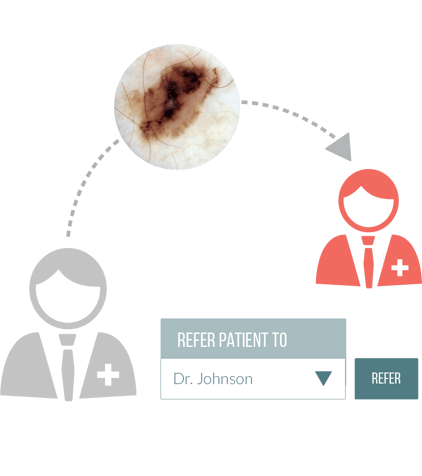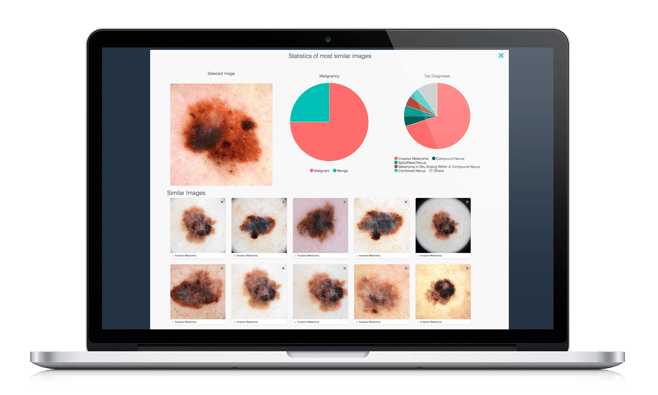by
The DermEngine Team on Nov 20, 2018
Today marks day three of National Skin Cancer Action Week in Australia (held from Nov. 24th-28th). With 2 in 3 Australians diagnosed with skin cancer in their lifetime, this is an important opportunity to educate people about the importance of both prevention and early detection. But where exactly are patients turning to seek medical support, and most importantly, are they receiving it?
Typically, when a patient wishes to have their dermatology-related case reviewed they will go to their primary care physician or a dermatologist. Unfortunately, due to limited educational resources and professional personnel respectively, patients are often delayed from receiving the potentially life-saving care they require. These challenges can be comprised into three interconnected categories:
1. Diagnostic Confidence Of Primary Care Physicians
Research demonstrates that 12-24% of dermatology-related cases are first managed by a primary care physician.1,2 Deemed the first line of defence against the early detection of skin cancer and other conditions, it is crucial that these medical professionals are confident in their clinical decisions. Shockingly, physicians often lack confidence in their ability to accurately diagnose lesions, citing their education level as “mediocre”.3 As a result, a greater percentage of cases are referred to a specialist, comprising as many as ~59% of received cases.4 2. Dermatologist Shortage & Patient Wait Times
2. Dermatologist Shortage & Patient Wait Times
Unfortunately, dermatologists are faced with an extreme shortage of supporting colleagues, with surveys citing an additional need of more than 9,00 dermatologists in order to properly service Australia’s growing population.5 As a result, patients wait times are typically greater than 30 days. Since the early detection of skin cancer is paramount to survival rates (98% versus only 16% for cases detected in later stages) it is essential that patients are able to immediately receive the potentially life-saving care they require.
3. Referral Accuracy & Efficacy
An unexpected consequence of the two challenges listed above is the increased risk of misplaced or inaccurate patient information caused by outdated dermatology EMR software. To elaborate, many older practice management systems do not offer interoperable capabilities (which would allow physicians to easily share vital patient records or data across platforms). As a direct result, studies suggest that charts cannot be found on 30% of visits, and that as many as 50% of referring physicians do not know whether their patients see the specialist.4,6
Potential Solutions
Clinical Decision Support Tools
Although an extensive problem without a single solution, many dermatologists and physicians are turning to intelligent dermatology software. Equipped with the latest innovations in artificial intelligence (AI), these systems can support the clinical decisions of physicians by providing valuable statistics of visually similar dermoscopic images to a submitted patient case. Consequently, physicians have direct access to a library of thousands of pre-labelled pathology images that they can reference prior to providing a diagnosis to build their confidence while acting as a valuable educational resource.

Interoperability
An equally sought-after feature, interoperability is essential for the efficient and streamlined sharing of patient data. By implementing interoperable, integrative systems, physicians are able to refer cases to a dermatologist, where they will receive proper notification about the referral along with all information relating to that patient profile, such as history, images, diagnosis history, etc. This not only allows the dermatologist to provide a faster level of care (by avoiding repetitive questions to the patient or physician) but also produce well-informed, evidence-based decisions.
Conclusion
Although the most common form of cancer, skin cancer is also one of the most treatable. As part of National Skin Cancer Action Week, it is important that doctors and patients alike are equipped with the knowledge, tools and resources that will promote fast and efficient consultations. Only two discussed examples are intelligent clinical decision support tools and interoperable software which can help optimize workflows and streamline best practice management. Altogether, the potential of new EMR features can be utilized to guarantee the most important mission of this awareness campaign, that is, skin cancer early detection and saving patients’ lives.
-The MetaOptima Team
Are you a medical professional from Australia and are interest in learning more about how dermatology EMR software can support your practice? Get in contact with our Country Manager, Peter Birch in Australia & New Zealand branch in Australia:
Phone: +612 9052 9063
Email: australia@metaoptima.com

Sources:
- www.bad.ord.uk
- https://www.dermatologyprofessors.org
- http://practicaldermatology.com
- https://getreferralmd.com
- https://fsdds.org
- https://www.healthcareitnews.com







